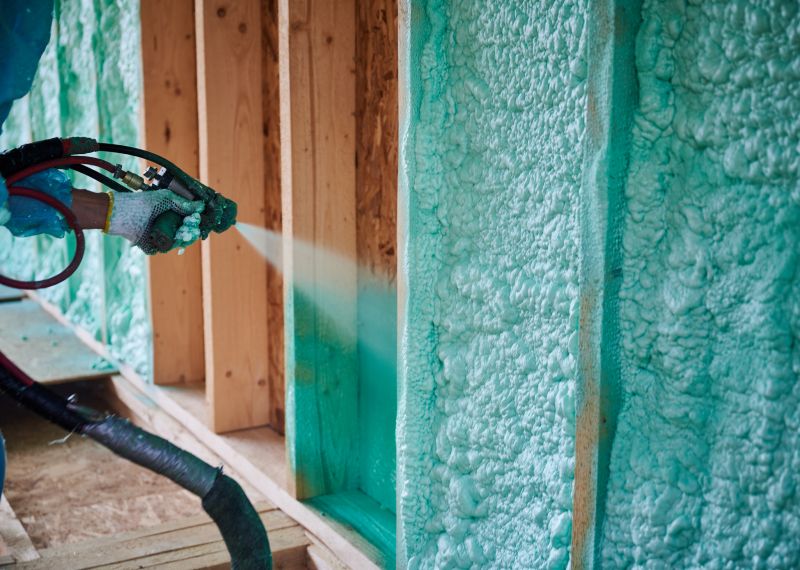Top-Rated Foam Jacking Products For Seamless Lifting Operations
Identify high-performance foam jacking supplies that ensure smooth, efficient, and secure lifting in various construction scenarios.
 Foam jacking products are essential tools used in construction, maintenance, and repair projects where lifting or leveling concrete slabs is necessary. These products typically involve the injection of specialized foam materials beneath existing concrete to raise and stabilize uneven surfaces without the need for extensive demolition or replacement. Foam jacking offers a less invasive alternative to traditional mudjacking or slab replacement methods, making it a popular choice for both professional contractors and DIY enthusiasts.
Foam jacking products are essential tools used in construction, maintenance, and repair projects where lifting or leveling concrete slabs is necessary. These products typically involve the injection of specialized foam materials beneath existing concrete to raise and stabilize uneven surfaces without the need for extensive demolition or replacement. Foam jacking offers a less invasive alternative to traditional mudjacking or slab replacement methods, making it a popular choice for both professional contractors and DIY enthusiasts.
Top Overall Option
Polyurethane Foam Jacking Kit
A comprehensive polyurethane foam jacking kit offers a versatile solution suitable for various repair needs. It typically includes high-quality foam, injection tools, and application accessories designed for ease of use and reliable performance. These kits are favored for their consistent expansion properties and ability to provide stable, long-lasting lifts for concrete surfaces.
Types of Products For Foam Jackings
Polyurethane Foam Injection
The most common type, utilizing polyurethane foam that expands to lift and stabilize slabs.
Polyurethane Foam Cartridges
Pre-measured cartridges designed for easy application in small to medium repairs.
Foam Injection Pumps
Specialized pumps used to inject foam precisely into the desired areas.
Portable Foam Jacks
Compact devices that combine foam injection with lifting capabilities for on-site repairs.
High-Density Foam Blends
Formulations designed for heavier loads and longer-lasting lifts.
Self-Leveling Foam Products
Foams formulated to automatically adjust and maintain level surfaces over time.
Commercial Foam Jacking Systems
Industrial-grade solutions suited for large-scale or commercial projects.
Epoxy-Based Foam Products
Foam formulations combined with epoxy for added bonding strength.
Expandable Foam Patches
Small foam patches used for localized repairs and minor lifts.
Injection Nozzles and Accessories
Specialized tools designed to facilitate precise foam injection.
Foam Stabilization Additives
Additives that enhance foam stability and expansion consistency.
Rapid-Set Foam Products
Foams engineered for quick expansion and curing times.
Low-Expansion Foam Formulations
Designed for delicate or thin slabs where minimal expansion is desired.
Heavy-Duty Foam for Foundations
Heavy-duty formulations suited for foundation stabilization and large lifts.
Eco-Friendly Foam Options
Foams made with environmentally conscious formulations, if applicable.
Popular Choices
Widely used for various lifting projects, these kits offer reliable expansion and ease of use.
Ideal for on-site repairs, these pumps provide controlled foam delivery.
Convenient for small repairs, offering quick setup and application.
Designed for demanding applications requiring strong, durable lifts.
Heavy-duty systems suitable for large-scale or commercial projects.
Products that help maintain a level surface over time with minimal intervention.
Foams with added epoxy for increased bonding and stability.
Designed for fast application and curing, reducing project downtime.
Suitable for delicate slabs or thin surfaces where minimal expansion is preferred.
Formulations intended for foundation stabilization and large lifts.
Environmentally conscious foam formulations for responsible projects.
The process involves drilling small holes into the concrete slab, through which the foam is injected. Once in place, the foam expands to fill voids and lift the slab to a desired level. This technique is particularly effective for addressing issues like uneven driveways, sidewalks, patios, and garage floors. The versatility of foam jacking products allows for quick application, minimal disruption, and a cleaner process compared to other lifting methods.
Choosing the right foam jacking product depends on several factors including the type of project, the size of the area, and the specific conditions of the existing concrete. Some products are designed for small-scale repairs, while others are suited for larger commercial applications. It is important to consider the expansion properties, setting time, and foam density to ensure a stable and durable lift. Proper application and selection of compatible equipment can significantly impact the longevity and effectiveness of the repair.
Whether you are a professional contractor or a homeowner tackling a repair project, understanding the different types of foam jacking products available can help you make an informed decision. The right product can facilitate a quick, efficient, and reliable lift, restoring the surface to a level and stable condition. Always follow manufacturer instructions and safety guidelines when working with foam jacking materials to achieve the best results.
Key Buying Considerations
- Type of foam (polyurethane, epoxy, etc.) and its suitability for your project.
- Expansion rate and how it affects the lifting process and stability.
- Curing and setting time to fit your project timeline.
- Foam density and load-bearing capacity for your specific needs.
- Ease of application, including the availability of compatible tools and accessories.
- Size and volume of the foam product relative to the project scope.
- Compatibility with existing equipment or if additional tools are required.
- Durability and long-term stability of the foam after curing.
- Availability of replacement parts or refills for ongoing projects.
- Safety features and instructions for handling and application.
- Cost-effectiveness considering the size and scope of your project.
- Environmental considerations, if relevant, such as VOC emissions.
- Manufacturer reputation and customer support options.
- User reviews and feedback for real-world performance insights.
- Application conditions, including temperature and humidity tolerances.
